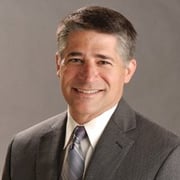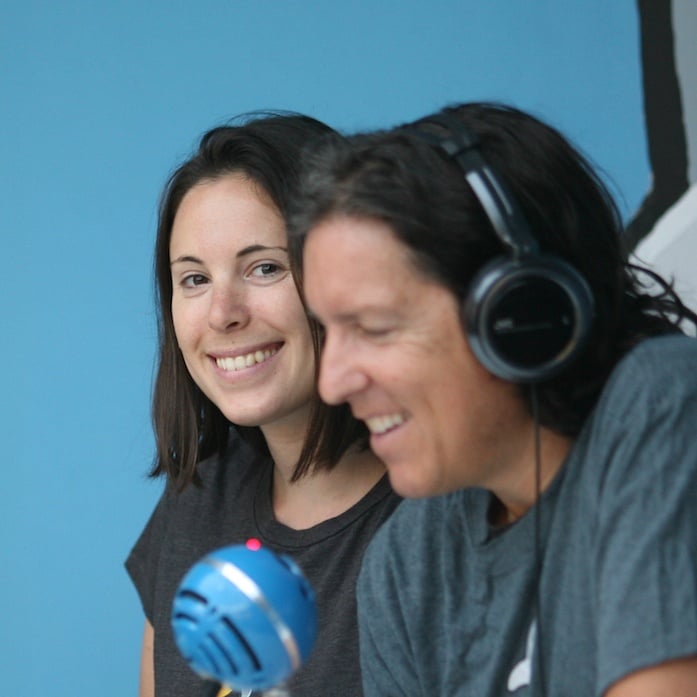Ed Powers has been a practicing Customer Success consultant and community organizer for the past several years in Colorado and recently became Vice President of Customer Success at simPRO, an Australian company making business management software for trade contractors. Ed joined the show to discuss the psychology of Customer Success, applying neuroscience in the customer journey what matters most to Customer Success leaders and practitioners in 2017, and building a Customer Success community based around learning and helping outside Silicon Valley.
Ed Powers
Vice President of Customer Success
simPRO
Applying Neuroscience in the Customer Journey
People go through a predictable process when making decisions across the customer journey. Ed has worked with dozens of companies to improve customer experience.
Customer Success outside Silicon Valley: The fundamentals are the same, but application differs
Originally created to meet people and get to know the local scene, Ed uses his Colorado Customer Success meetup to help educate, create networking and sharing around Customer Success. In other parts of the world, Customer Success meets cultural differences including languages, cultures, traditions and rituals used in different parts of the world. You have to understand those nuances. The application may be different, but Ed says humans are similar, and the underlying approach is the same. Check out the Colorado Customer Success meetup.
What do Customer Success leaders struggle with most?
Metrics. Ed says people are still trying to have meaningful numbers and manage things according to dashboards. This includes customer advocacy, measuring CSAT, developing new skills, building teams, and more people want to hear about.
High-performing Customer Success organizations have one thing in common: they measure the right metrics.
It enables people to be proactive, take appropriate actions at appropriate reactions with good metrics systems, and track improvement. Comparing CS with other companies. A top-down expectation in SaaS world consolidating around a set of KPIs permeates through the org. This is a general lead in the industry and it's still difficult to quantify it. People either have far too few or far too many metrics. Get the right set for just right reasons for it to be meaningful.
Measuring the health of a local Customer Success community
With new brain imaging technology like functional MRIs, we see what activates in the brain in decision-making. We are all very alike. We think we're different, but humans are pretty predictable in how we do things. There is a basic human need for connection, relatedness and community. Homopholy is gravitating towards people who are like us, which is why Customer Success people like to gather! On a side note - Join us and your community at BOCE at Pulse Conference.
Trust Sells in Software
Neuroscience has been used to help clients in Customer Success. People make decisions not based on value – they make them based on personal benefit, often subconsciously. Whether providers, tech and brand and people behind it are trusted matters. There is a natural human process in how we learn to trust, which is a reinforcement learning process. You can incrementally build trust over time by understanding how to make renewals more automatic. When people feel confident and comfortable they're more likely to renew. You have to deliver value and meet customer needs and show rational benefits, but what wins the day is a sense of trust. Ed orchestrates this: how do you over a series of interactions with a customer help them know, like and trust the vendor? These are moments of connection that if are done systematically and makes renewals more seamless.
Click-to-Tweet:
Ep. 36 #HelpingSells Podcast | @edpowers80525 On Building #CustomerSuccess Communities Outside Silicon Valley. https://ctt.ec/h1v21+
Post-sale: there is a moment of truth where customers have buyer's remorse.
Ed says there is a disconnect between sales and operations, and you need to smooth that. When people make a decision to buy your software, they need to be convinced they took the right risk and choice. If you can smooth that interface and make sure promises made in sales are delivered in operations, that builds confidence and trust. It's fumbled most by companies.
What role does education play in software adoption and customer success?
People need to understand how to use software to get value from it during onboarding and beyond to realize that value. There are many ways to do that – the natural onboarding process and, as you work with customers, you can sell education and training to generate revenue and drive customer success. education and learning is the pathway to get value from your product. While you're learning the product, you're also learning to trust
Helping individuals at your customers achieve personal gain.
We need to sell to the VP of something and say, "your career will be better when you buy our product!" Neuroscience shows your subconscious makes a decision seconds ahead of when your conscious mind makes a decision. We're not even aware of it. We do this based on anticipated emotional benefits. Ed mentions David Rock’s description of SCARF which he uses in HR, specifically leadership dynamics and conducting better performance evaluations. The neuroscience literature on value-based decision making cites these same five drivers, so his mnemonic device is handy to use there, too. I use SCARF to identify unspoken, emotional needs when I conduct customer journey mapping with my clients. We're helping customers achieve business goals but the real question is about change in status and social standing, greater certainty in business, make safer and more comfortable, and get autonomy, power, choice and control and increased relatedness in a group or community–and is this a fair exchange. Does price/value make sense.
Related reading:
-
How Customers REALLY Decide
-
Learning New Software is Like Learning to Drive
-
Trust Earned…and Learned
-
Why Trust Matters for Customer Success
-
How to Win the Game of Trust
-
Five Critical Moments in the Customer Experience
-
Why a CSM’s First Impression Means So Much
Approaching a new CS program
Start with the mission and what are you trying to accomplish. Anyone who starts a CS program needs to start with mission, vision and values. What are you trying to do? Articulate this for your organization. For Ed, he is focused on Customer Success keeping promises, earning trust, and growing business. Then learn how to measure and track that and train to that. The Customer Success role is all operations, not just CS; it includes implementation, onboarding, professional services and support into one seamless experience post-sales to generate more income, more revenue and more recurring customers.
Tell us what you think of Helping Sells Radio
We'd love it if you'd:
- Write a review on iTunes.
- Tweet us using the hashtag #HelpingSells
- Comment below.
Thank you for listening to the show.





